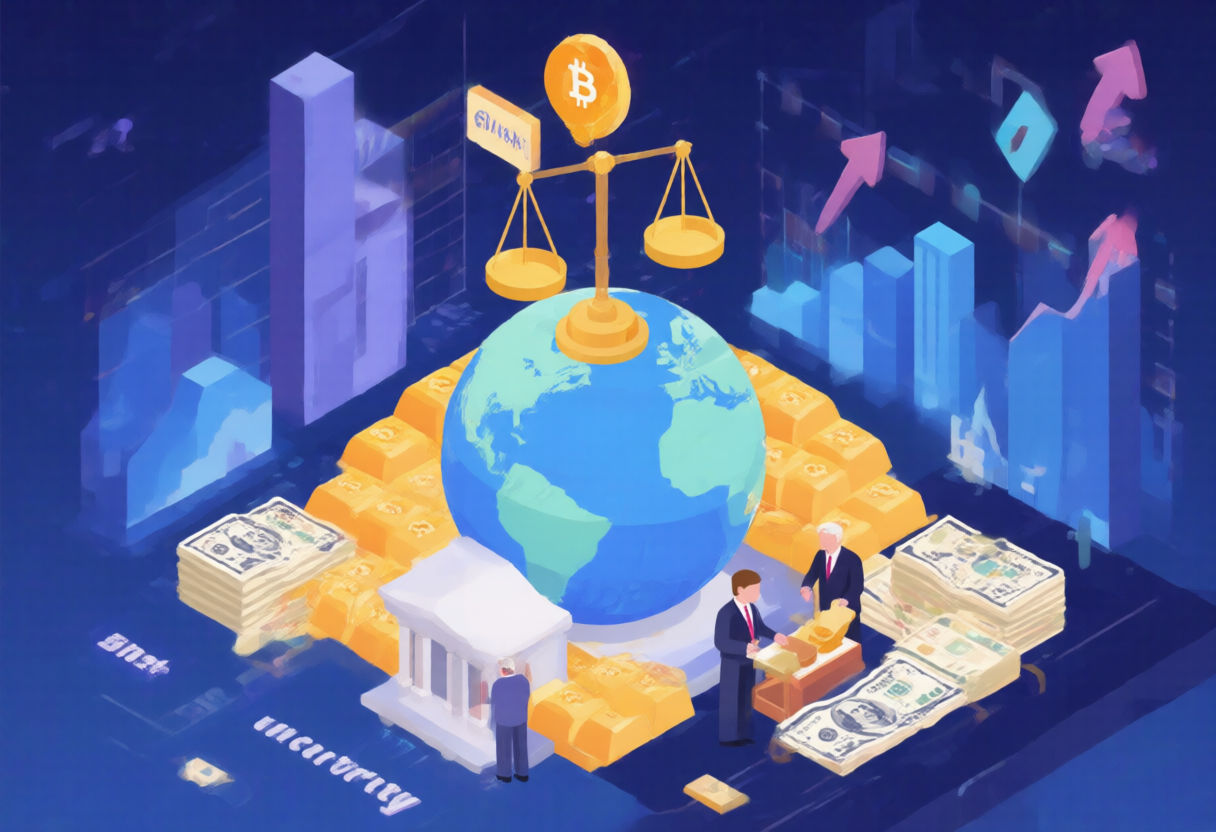
tl;dr
For the first time in 30 years, central banks have prioritized gold over U.S. Treasuries, signaling a seismic shift in global finance. This trend, driven by waning trust in fiat currencies and rising economic uncertainty, highlights gold's resurgence as a safe-haven asset. Meanwhile, cryptocurrencie...
**Gold Surpasses U.S. Treasuries for First Time in 30 Years, Signaling a Shift in Global Finance**
For the first time since the mid-1990s, foreign central banks have accumulated more gold than U.S. Treasuries, marking a pivotal moment in the evolution of global finance. This milestone, confirmed by data from Barchart, reflects a profound reevaluation of safety, liquidity, and trust in the world’s monetary systems. The shift underscores a growing skepticism toward traditional fiat assets and a renewed embrace of hard assets, as central banks worldwide pivot toward gold amid escalating economic uncertainties.
### A Record-Breaking Gold Buying Streak
The World Gold Council reported that central banks purchased a net 19 tonnes of gold in August 2025 alone, following 10 tonnes in July. With these figures, global central banks are on track to acquire approximately 900 tonnes of gold for the year—a fourth consecutive year of purchases exceeding twice the long-term average. This buying spree has been ongoing for 16 years, the longest streak in record, following decades of net sales prior to 2010.
The Kobeissi Letter highlighted that 23 countries expanded their gold reserves in the first half of 2025, with analyst Kobeissi asserting, “Central banks cannot stop buying gold.” The trend is not merely a reaction to inflation but a response to deeper structural shifts in global finance.
### The Erosion of Trust in Paper Assets
Macro researcher Sunil Reddy pointed to the collapse of the Federal Reserve’s reverse-repo balances—a key tool for managing excess liquidity—as a catalyst for gold’s surge. When these balances dwindled, gold prices soared, signaling a flight to “hard money” as investors sought assets immune to default. “Gold is no longer just an inflation hedge; it’s becoming pristine collateral—the asset of last trust,” Reddy explained.
This shift comes as trust in U.S. Treasuries wanes. The U.S. government now spends nearly 23 cents of every dollar of revenue on interest payments, while political gridlock and soaring debt levels erode foreign confidence. Meanwhile, major currencies like the British pound and Swiss franc have lost 70–90% of their value against gold since the 1970s, highlighting the fragility of fiat systems.
### The Rise of Digital Gold?
While gold’s dominance faces new challenges, cryptocurrencies like Bitcoin are positioning themselves as potential rivals. Crypto investor Lark Davis noted that although gold fell 5% in a single week—the steepest drop since 2013, Bitcoin surged 3%. “If BTC absorbs even a fraction of gold’s market cap, it could spark an insane rally,” Davis said, citing scenarios where a 1% shift could push Bitcoin to $134,000.
This sentiment echoes broader speculation about “digital gold,” with some analysts suggesting a looming rotation from physical to digital assets. However, the recent gold selloff was largely mechanical, triggered by a large ETF block trade that activated algorithmic volatility. “Nobody important sold,” an analyst noted, adding that Chinese gold ETFs even increased exposure during the dip.
### What Does This Mean for the Future?
The transition of central banks from decades of gold sales to record purchases signals a fundamental reordering of global finance. As the institutions that control fiat currencies increasingly “stack gold,” questions arise about the implications for investors and markets. Crypto Jargon posed a rhetorical question: “If the people who control the money printer are stacking gold, what should the rest of us be stacking?”
This shift could define the decade ahead, reshaping how nations and individuals perceive value, security, and the future of money. While gold’s role as a store of value remains unshaken, the emergence of digital alternatives suggests a new era of competition—and opportunity—in the quest for financial resilience.
As the world grapples with inflation, debt, and geopolitical uncertainty, the race between gold, Treasuries, and cryptocurrencies is just beginning. One thing is clear: the old metrics of trust are crumbling, and the search for stability is driving a renaissance of hard assets—both physical and digital.